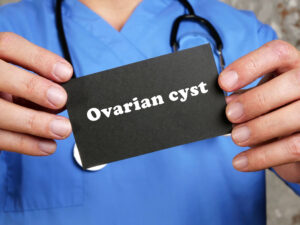Fear of the unknown, not knowing what to expect or what the visit will entail, are a few reasons patients relay for feeling apprehensive about coming to their “yearly” exam.
Walking into an examination room and seeing a 15 year old sitting on the table looking like a deer in headlights, and a mom sitting in a chair opposite her daughter looking proud, concerned, and reflective as she takes pride in knowing that her little girl is developing into a woman, is a scenario I commonly encounter. It is her daughter’s first visit to the ob/gyn. After all introductions are made, an overview of how the visit will proceed is laid out. This basically entails listening to the expectations of the mother and daughter as well as expressing what I expect to accomplish during the visit. I often times tell my young patients that most of my conversation will be directed at them and that the expectation is for them to answer as completely as they can, utilizing the parent as a lifeline to fill in the blanks if necessary.
One of the first orders of business is relaying that in most circumstances a pelvic exam is not necessary during the initial visit and perhaps subsequent visits as long as the patient is not symptomatic. Said statement is usually followed by a HUGE sigh of relief!!! The initial visit to the ob/gyn, which typically should occur between the ages of 13 and 15, is an opportunity to establish a relationship with the young patient as she will eventually move on from the care of her pediatrician.
A review of family history, with special care to note a history of gynecological cancers, cardiovascular disease, breast cancer, colon cancer, and thromboembolism, is taken. The patient’s medical history is reviewed making sure to include pubertal milestones, menstrual history, hygiene, immunization status, etc.
Social history is reviewed to ensure that there are no social stigmata with regards to “fitting in”, body image, substance abuse, eating disorders, etc. This is also an opportunity to illicit from the patient what her future goals/interests might be.
While the parent may be present for the initial consultation, there is often times a period where the young patient and clinician will speak in the parent’s absence as well as where the parent and physician will speak in the patient’s absence to ensure that all concerns are properly addressed. While most young patients prefer that their parents exit the room during the initial examination, this usually entails no more than a visual exam to ensure the proper development of secondary sexual characteristics as well as education on what “normal” is.
The American College of Obstetricians and Gynecologists recommends pap screening at the age of 21. In patients under the age of 21 who are sexually active, the college recommends annual screening for gonorrhea, and chlamydia.
Whether it’s your first visit, routine visit, or “I haven’t been to the ob/gyn in more than 10 years” visit, the goal remains the same. To educate, and help transition you into whatever stage of life you are in…..marriage, divorce, childbearing, menopause….., to dealing with no sexual desire, birth control/hormone therapy.
There is no topic too big or small, no issue too obscure. There is never any judgment. I am here for you.
Until next time, Look Better. Feel Better. Be Better.
Dr. Angela










